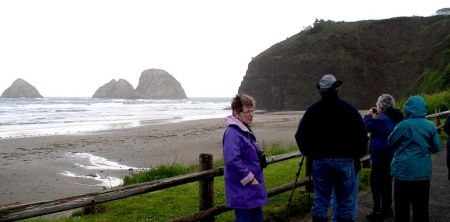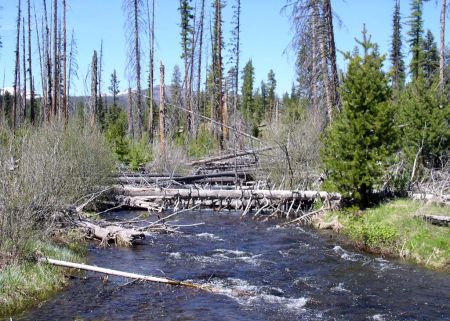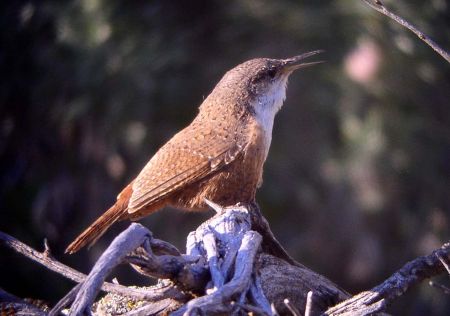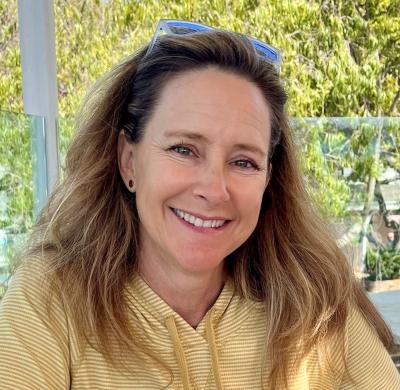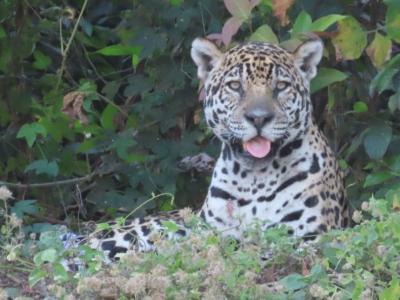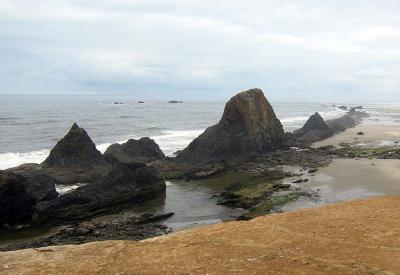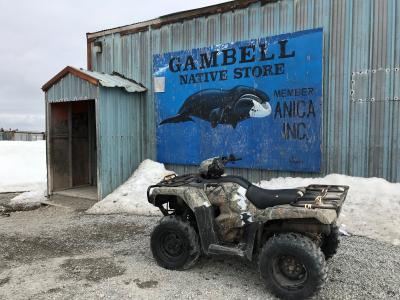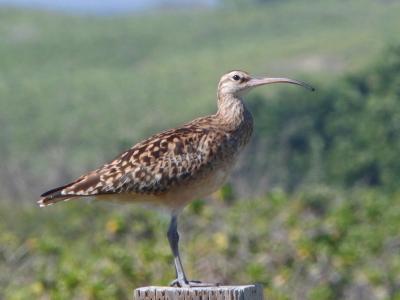2023 Narrative
In Summary
Our fabulous drive though the diverse corners of Oregon coincided with the most perfect stretch of weather imaginable. Never too cold, never hot, never too windy – just as Goldilocks ordered. We saw some wonderful birds and scenery along the way, with picnic lunches every day in idyllic settings. Among the 227 species we saw and heard, owls (six species), woodpeckers (11 species), and daytime raptors (14 species) stood out among the highlights. Favorites also included Mountain Bluebird, Sandhill Crane, Clark’s Nutcracker, and Black-billed Magpie east of the mountains, while on the coast we saw Tufted Puffin at two of their few breeding colonies, Brandt’s Cormorant in their full breeding colors, Wandering Tattler, and Rhinoceros Auklet.
In Detail
With little problem navigating the early morning weekday traffic right through the middle of Portland on our first day, we arrived at the very birdy Fernhill Wetlands on a beautiful morning. We soon spotted a stunning male Cinnamon Teal among the many Mallards and Gadwall, while at the same time a pair of Virginia Rails foraging in the open. Rich’s friend notified us of a Clark’s Grebe, which we eventually saw well; we were lucky to be present when a small group of the locally very rare Forster’s Terns flew in and then vanished; they were the first record for this heavily birded spot, but no one else ever saw them again. One of the prize sightings of the day was a pair of Bushtits actively building their nest, perhaps a second attempt at this late date. It was unusual to have had four Cackling Geese lingering this late with the abundant resident Canada Geese. With some birding in the Coast Range, where a pair of young American Dippers were being fed by a parent and a re-growing clearcut yielded MacGillivray’s Warbler and Willow Flycatcher, we soon found ourselves on the coast at Cannon Beach. The weather couldn’t have been nicer, so we didn’t mind having to wait a while to have a Tufted Puffin fly over. We eventually watched one land on Haystack Rock and had great views in the spotting scope. Later in the afternoon a friendly worker let us into the Nehalem Sewage pond, which was surprisingly void of birds, and so we had a timely arrival at our hotel with a fabulous view of the Netarts Bay mouth.
Our day in the Tillamook area began with picnic breakfast with the same sublime view of Netarts Bay in very inviting weather. We began our birding in earnest at Cape Meares Lighthouse, where territorial Hermit Warbler and Golden-crowned Kinglet came out of the trees, while a very cheeky pair of Wrentits boldly hopped around on a fence railing before disappearing into the dense salal thickets. All the way around to other side of the cape, we checked out the surf and bay of Bayocean Spit, finding low tide and very distant birds; Goodspeed Rd wasn’t very active either, but a check of the Barview Jetty was certainly worth it for the close views of Rhinoceros Auklet in the channel. The number of Pigeon Guillemots here was also quite the sight. It was a bit warmer inland at Kilchis River campground, perfect for a picnic lunch with Margined Whites flitting about in the understory and Western Tanagers and Black-throated Gray Warblers in the trees above. A female Bullock’s Oriole here was a surprise and quite rare in the county. A motionless Douglas’s Squirrel, also known as Chickaree, sat calmly at close range in a small shrub. We took the scenic drive back to Netarts via the WWII-era dirigible hangar and a back road that resulted in a memorable sighting of a very responsive Northern Pygmy-Owl. After dinner we returned to the Cape Meares Lighthouse area and patiently waited until it was dark enough for a Northern Saw-when Owl to finally respond to whistles, when it came in quite close several times for fabulous views of this often difficult to find species.
With the same gorgeous breakfast setting, but the occasional, very light (and almost comforting) mizzle, we began our third birding day with a few Red Crossbills of Type 10 in their favored Sitka Spruce behind the hotel. Little did we know that these would be the only crossbills on the entire tour, a record low count. A short stop down the road proved that the group of previously reported American White Pelicans (very rare on the coast) was still on Netarts Bay, and then a stop at the Lookout Point trailhead resulted in handsome Varied Thrushes with their wonderful, eerie songs. Sitka Sedge State Park gave us several Steller’s Jays as well as a few lingering migrant Whimbrel. We then worked our way down the coast with several stops, spotting a Gray Whale at Boiler Bay, the best spot on the coast to see them close to shore. After the seabird breeding spectacle at Yaquina Head, we were still missing a couple of target birds, so we drove all the way south to Yachats. There we found both Marbled Murrelet and Wandering Tattler, and after declaring victory, made our way inland to Corvallis.
The very top of Marys Peak was shrouded in fog in the early morning, but the important stretch of road was not, and so we were successful in our search for Sooty Grouse on the road, seeing a male and a female very well. Golden-crowned Kinglet was one of the few species we saw near the top of the mountain in the lovely Noble Fir groves that surrounded the wildflower-covered meadows. Mountain Quail remained heard-only, but the tour’s second Northern Pygmy-Owl responded nicely for great views as it flew back and forth over our heads and perched a few times for scope views. After a check of the Philomath sewage ponds, where a lone Greater White-fronted Goose was unusual, we lunched at Bellfountain County Park, a very birdy little spot. Red-breasted Sapsucker, Cassin’s Vireo, and Hutton’s Vireo were highlights here. We had time to quickly check a couple spots at Finley National Wildlife Refuge, with stops on the entrance road producing our first Yellow-breasted Chat and Acorn Woodpecker. On the refuge, Cinnamon Teal and Yellow-headed Blackbird were the main highlights. We attempted owling at a couple local parks after dinner, but for some reason, no one wanted to respond this evening.
Before departing the Willamette Valley, we tried once more at the restored native prairie south of Corvallis, seeing the local subspecies of Horned Lark and Lazuli Bunting, but dipping on the reported Grasshopper Sparrows for a second time. Passing through the verdant western slope of the Cascades we soon found ourselves in a very different habitat at high elevations. A quick highway stop resulted in a surprise Nashville Warbler, only later to find at least two more territorial birds on a back road; other birders were also noting the unusual abundance of them this year. More back road stops resulted in Green-tailed Towhee, Fox Sparrows (Thick-billed), and Lewis’s Woodpecker. We had our picnic lunch at a peaceful horse camp all to ourselves, and the birding highlights here were the mimicking jays – a Steller’s Jay mimicked Cooper’s Hawk (which was presumably in the area), while Canada Jay mimicked Rich mimicking a Northern Pygmy-Owl. We made another random stop where Gray Flycatcher and Pygmy Nuthatch were found, while a failed attempt to find a Least Flycatcher (which was apparently re-found the following morning by other birders) resulted instead in a spectacular sighting of Northern Goshawk, soon to be renamed American Goshawk. We made one final birding stop at a spring in an old burn, where White-headed Woodpecker was the highlight, though Western Tanager, Townsend’s Solitaire, Cassin’s Finch, and Cassin’s Vireo were among the many other birds attracted to the water.
Variety was added to our full day’s drive to Burns with a detour through the Prineville area with its very local nesting colony of Tricolored Blackbirds. When then worked our way up the scenic Crooked River Canyon. California Quail made us pause along the roadside, while likely-looking spots for Rock Wren, Canyon Wren, and White-throated Swift proved fruitful, but also bringing us Ash-throated Flycatcher and Black-throated Gray Warbler. After our picnic lunch in the company of Bullock’s Orioles, we commenced the long drive, dominated by Western Juniper and Tall Sagebrush. One of the latter hosted a nest of Loggerhead Shrike with several eggs, while a stop at a stand of old growth of the same yielded the hoped-for Sagebrush Sparrow. The otherwise monotonous drive was punctuated by wonderful sightings of Prairie Falcon and Ferruginous Hawk on powerpoles by the highway. We finished the day’s birding on the way to dinner with a drive past flooded meadows to become future hay fields, where Sandhill Crane, Yellow-headed Blackbird, and many ducks abounded.
Our full morning driving through Malheur National Wildlife Refuge began in the Silvies River Hayfields and a detour to see a Burrowing Owl. A Ferruginous Hawk was at its nest of many years, guarding at least one chick. The refuge headquarters was alive with many migrant Bullock’s Oriole, Western Tanagers, and Warbling Vireos, among nearly 50 other species at this one stop. We rather wandered around on our own, so most of us missed but were happy to hear about the amazing sight of a Long-tailed Weasel climbing a tree and robbing a cavity of European Starlings of a couple nestlings. After headquarters we spied Eared Grebes at Buena Vista and Eastern Kingbirds and Bobolinks in the southern part of the Center Patrol Road. We returned via the scenic Diamond Craters where Lark Sparrows flirted in front of the van and Say’s Phoebe was in the crater. A Common Raven occupied a nest in the middle of the historic Pete French round barn. We then completed the loop drive along the well-naped Raptor Alley, where Ferruginous Hawk was a highlight – though the numbers of other raptors were impressive, including Golden and Bald Eagles and Red-tailed and Swainson’s Hawks. An after-dinner trip to Radar Hill just outside of town located good numbers of mosquitos, but it also didn’t take us long to see the first of a few Common Poorwills at this very reliable location.
We spent a lovely day in the richly diverse coniferous forests of the Blue Mountains north of Burns. Our first stop at the Swick old growth grove was a lucky one, with a single, silent Clark’s Nutcracker appearing while we were watching our first Williamson’s Sapsuckers. It turned out to be the only one of the trip; the bulk of the species’ population is presumably off with the crossbills, which were notable by their utter absence. The stakeout spot for Slate-colored Fox Sparrow on Murderers Creek Road was as reliable as ever. Some Canada Jays appeared after the male sparrow went back to his singing and the female fed casually nearby under a bush. We should have been on the alert when the jays mimicked Sharp-shinned Hawk – or rather, the sparrows should have. After a brief commotion in the shrubs, we looked to see a real Sharp-shinned Hawk emerge with the female Fox Sparrow in its talons. It was about as surprised as we were but managed to hang onto its meal as it quickly vanished into the woods. We stopped when a Lincoln’s Sparrow was heard through the van window, and we finally coaxed a very shy bird to be more assertive in defending its territory. No Dusky Grouse graced the road to the top of Aldrich Mountain, and we were stopped less than two miles from the top by a lingering snow drift (as well as some splendid wildflowers, such as yellow fritillary). We did see some lovely Mountain Bluebirds and Cassin’s Finches here, while farther back down the road Ruby-crowned Kinglet, Townsend’s Warbler, and Columbian Ground-Squirrels were highlights. We added some ducks with a quick stop at Yellowjacket Lake, including a handsome drake Green-winged Teal. For variety, we took pizza to go to have in the presence of the Great Horned Owl family at Malheur NWR HQ, along the way passing by some wet meadows with American Avocet, Black-necked Stilt, and Yellow-headed Blackbird on fenceposts very close to the road.
Our last full day in the Great Basin was dedicated to traversing one of the most remote corners of the state, though on this Memorial Day weekend, the amount of traffic was impressive. We started with picnic lunch at Frenchglen where we saw a gorgeous male Rose-breasted Grosbeak, a nice eastern vagrant to Oregon. Photos showed that we overlooked a female of the same species, foraging with it and some female Black-headed Grosbeaks, but later other birders saw it as well as a second male. Just up the road we managed to coax in a pair of Blue-gray Gnatcatchers and then then had to make a photo stop for the amazing show of lupine, phlox, and balsamroot in the Catlow Valley. A Chukar perched on the rimrock above the highway vanished before everyone could see it, but some patient playback brought the bird back out for excellent views. We managed to include a short stop at Cottonwood Creek, where we had great views of Lazuli Bunting among the many migrating Western Tanagers. At the Fields Oasis, an adult and juvenile Great Horned Owl were highlights, but they were eclipsed when we spotted a female Western Screech-Owl poking her head out of nest cavity and tooting back in response to Rich’s imitation; the male tooted back as well, though invisibly from a dense cottonwood. The awe-inspiring views of Steens Mountain and the Alvord Basin were broken up by at least three territorial Black-throated Sparrows, some fabulous wildflowers, a Leanira Checkerspot, and a Long-nosed Leopard Lizard. On the last leg of our drive, the Raptor Alley was again very good with our best views of Prairie Falcon ever.
Our final day’s long drive back to Portland was first punctuated by some fruitful stops along the S Fork John Day River, where we had great views of sparkling blue Lazuli Buntings, Eastern Kingbird, and a large group of Bighorn Sheep, including several lambs up on the steep slopes. We enjoyed our time at the scenic John Day Fossil Beds National Monument, even finding a Chukar from the parking lot. From then on it was only short roadside stops, but at one we had a Golden Eagle on one side of the road and heard a young one on the other, and then realized there was a huge nest in a Ponderosa Pine; nest trees are much rarer than cliff nests in Oregon. A quick afternoon rest stop yielded a confiding Ash-throated Flycatcher, and countless Horned Larks adorned the fences as we drove through wheat country and wind turbine generator fields. One last birding stop before the freeway driving resulted in a fantastic Peregrine Falcon display, a bird seeming to just play in the wind along the Columbia River. We finished the long drive arriving at Multnomah Falls, a very beautiful spot though we had to wade through perhaps the largest throngs of tourists this place would see on any single day of the year, thanks to the federal holiday weekend. Thanks to eBird, it was easy to see that we tallied 227 species in the 10 days that we covered 2122 miles of beautiful Oregon scenery.
Richard Hoyer 2023
Back to Narratives





